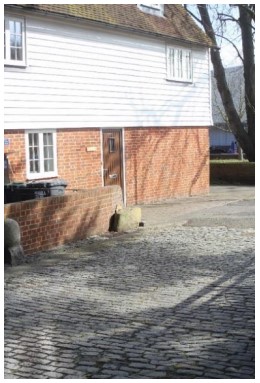A Town Of Bridges

In 1626, the findings of a report into the condition and maintenance of the five bridges that crossed the waterways in the town describes how on the South side of the Mill Stream there is a raised bank as it runs to the South of the Castle, and then through the Great Bridge.
The water of the streams running from the North West, is retained in the Mill Stream by the bank.
The stream is considered to be artificial and for the benefit of the Castle and the Mill. By artificial it is meant that the raised bank to the south side retains a depth near to the castle and then diverts the flow towards the Mill. Within the bank there is a ‘pinnocke’ (2) that issues water southwards.
When repairs to this bank were required, it was the responsibility of the Miller to make the repairs at this own cost.
In 1776, at the time of a new bridge being built across the main river documented observations include:
- The waters from a valley on the North side of the Medway flood plain were retained within banks from about two miles above the castle and before reaching the river, were intercepted to fill the castle moat and serve the Lord’s Mill.
- The waters were directed to, and retained in, the Northern arc of the moat by weirs at the South and the South-West and South-East of the castle.
- On the South side of the castle the water, penned for the use of the Mill and for the protection of the foot of the wall, was at least 100 foot wide at the bridge.
Due to it still being penned and diverted around the town by the sluices and weirs, together with the increasing abstraction of water for industry, there were times in the eighteenth century when there was little or no flow on the main river and Mill Stream.

In the late 1820’s, granite shipped from Cornwall and then barged up the Medway to Tonbridge was used to improve the road over the water in front of the Mill.
The granite was the same as was used to improve the High Street and was able to withstand the iron wheels of waggons making it ideal to form part of the bridge which can still be seen today.
Today, the same bridge is considered ‘weak’ and is waiting major reconstruction.
(2) A gate or opening